On the 50th day after Easter falls one of the greatest and most ancient Christian holidays - Pentecost or the Day of the Holy Trinity.
Pentecost has been a special celebration since the early days of Christianity, as an event of primary importance for the Church. On this day, the New Testament revelation of God the Trinity was completed. That is why this holiday is also called the Day of the Holy Trinity.
By the end of the IV century. the celebration of the Ascension of the Lord and Pentecost was common and took place seven weeks after Easter. Therefore, the iconography of the Ascension greatly influenced the icons of Pentecost. The iconography of both holidays developed, в першу чергу, based on the texts of the Holy Scriptures, but was not limited only to them.
We can find images of Pentecost in the museum's collection of old prints, eg, in the book Triod Tsvitna, where the liturgical texts of this holiday are placed. So in Triod (inv. No. Al-352) 1642 year of publication (Lviv, printing house of Mykhailo Slozka) we find the already formed and generally accepted traditional iconography of Pentecost.
As in the images of the Ascension, we see the Mother of God with the apostles. The central place on the throne is given to the Mother of God. On the right and on the left are six apostles. They hold scrolls in their hands - a symbol of their preaching. All are in Zion's Upper Room. Stylized architectural details of the room are depicted behind them. But the composition of the icon is open, not limited by walls. The depicted action is rather shown against the background of the building, than in it. The xylograph shows that, the meaning of the depicted action is not limited to any place, not sometimes.
From above, rays of light descend from heaven on the Mother of God and the apostles. Above each figure are depicted tongues of fire. There is no usual image of the Holy Spirit in the form of a dove on this print, since there are no direct indications of this in the book of Acts. Tongues of fire were a manifestation of the presence of the Holy Spirit on the day of Pentecost.
At the bottom of the composition, a special space in the form of a semi-ellipse is allocated. It depicts an important symbolic figure - Cosmos in the form of an old man. He reverently holds the canvas in his hands 12 scrolls, symbolizing the preaching of the apostles. The scrolls are placed on the tablecloth as special sacred objects, which should not be touched with bare hands.
This iconographic detail once again emphasizes the universal meaning of the holiday, emphasizes the universal character of the apostles' preaching. The figure of Cosmos did not appear on the icon immediately, and became the fruit of icon painters' search for a way to convey an understanding of the significance of the event, that took place in Zion's Tower, for the whole world. At first, they were depicted in the arch 16 "nations", i.e. people of different ethnicities, which are mentioned in corresponding numbers in Acts. Subsequently, when the Roman Empire became Christian, they began to depict the Orthodox emperor there, as an educator of barbarian peoples. Sometimes the figure of a conditional barbarian was also placed nearby. That's why the above-mentioned figures could not fully express the good news, that the Holy Spirit descended through the apostles to the whole world and all nations without exception. That is why the old man Kosmos appears in the iconography of the holiday - a symbol of that, that the Holy Spirit sanctifies the whole world, everyone and everything in it.
The same constant iconographic plot of Pentecost, but with its own characteristics we find it on the wonderful guise of the felon (inv. No. I-1989) from cherry velvet of the end of the 17th century. The composition is gapped 27 figures: The Virgin on the throne, on either side, two hierarchs with halos (names are not signed), 12 apostles, which are clearly distinguished from other figures and more 12 figures without halos. Tongues of fire are on everyone's heads. The figures of the holy martyrs Paraskeva and Tatyana are carved separately on the shoulders. Unlike the previous engraving on the bust, the Holy Spirit is depicted in the form of a dove in the light. The quilting is made of gold, with silver and silk threads "to attach". Face, the hands and feet of the figures are embroidered with silk.
During the descent of the Holy Spirit, not only the Mother of God and the apostles were in Zion's upper room, but also other disciples and followers of Christ. We learn from the book of Acts, that "up to one hundred and twenty" people gathered there for prayer. That explains it, why the number of figures on this effigy is increased.
Less detailed due to space limitations, but no less sophisticated work of the image of the "Descent of the Holy Spirit" adorns the Gospel (inv. № Al-185), which in 1701 year was presented to the Borys-Hlib Cathedral by the General Clerk of the Zaporizhzhya Army, and later Chernihiv regimental judge Karpo Mokrievich with his wife Anna Kokhanovska. Despite the small size of the icon, the master was able to convey the special strong feelings of the apostles through the position of the figures and their gestures.
The frame was made in the German city of Augsburg, which was the center of jewelry production in Europe at the time. On a red background are fixed pictorial finift medallions with the image of Christ the Almighty in the center and the twelfth holidays around, among which is the plot of Pentecost .
The Holy Day of Pentecost in the Orthodox Church corresponds to another icon in terms of content - the Old Testament Trinity in the form of three Angels. This is historical, described in the book of Genesis, image of God's appearance to Abraham. This phenomenon as an image of the Holy Trinity is understood only through the prism of the New Testament Revelation.
In the collection of the Chernihiv Historical Museum, there is an icon of the 18th century "Old Testament Trinity" (inv. No. I-1138) on crimson velvet. The embroidery is made of silver, threads spun with colored silk, sparkles, glass necklace, with pearls. The face and hands are picturesque.
The same plot, but already with the figures of Abraham and Sarah depicted on a quilted medallion sewn on the felon (inv. No. I-1202) the beginning of the 18th century. Face, the hands and feet of the figures are embroidered with silk.
The iconography of the "Old Testament Trinity" is also found on the wonderful silver plates of the enthroned Gospels from the museum's collection, which are examples of high jewelry art. This is the Gospel 1600 year (inv. No. Al-169) from the Mamonichiv printing house (Вільно), salary sir. XVII ст. and three Gospels from the printing house of the Kyiv-Pechersk Lavra:
1) 1697 year (inv. № Al-1513), horse salary. XVII - beginning. XVIII ст.;
2) 1707 year (inv. No. Al-194) , salary 1719 year;
3) 1707 year (inv. No. Al-193), friend's salary. XVIII ст. All salaries are the creations of Ukrainian goldsmiths.
Thanks to skillfully executed woodcuts, icon painters, goldsmiths and goldsmiths to the iconographic subjects "Descent of the Holy Spirit" and "Old Testament Trinity" on church liturgical objects, which are now carefully preserved in the Chernihiv Historical Museum named after V.V. Tarnovsky reveals the deep spiritual meaning of Pentecost and the wide symbolism of the iconography of this holiday.
Старший науковий співробітник музею,
Candidate of Theology Miroslav May-Boroda
______________________
Arendar G. Silver plates of the Gospels of the 17th–19th centuries from the collection of the Chernihiv Historical Museum named after V.V.. Tarnovsky. Kyiv, 2021.
Zaichenko V. Gapts of the XVII-XIX centuries. Chernihiv, 1991.
Polovnikova S., Fed and. Collection Cyrillic old collection of Chernihiv Historical Museum. В.В.Тарновського. Kyiv, 1998
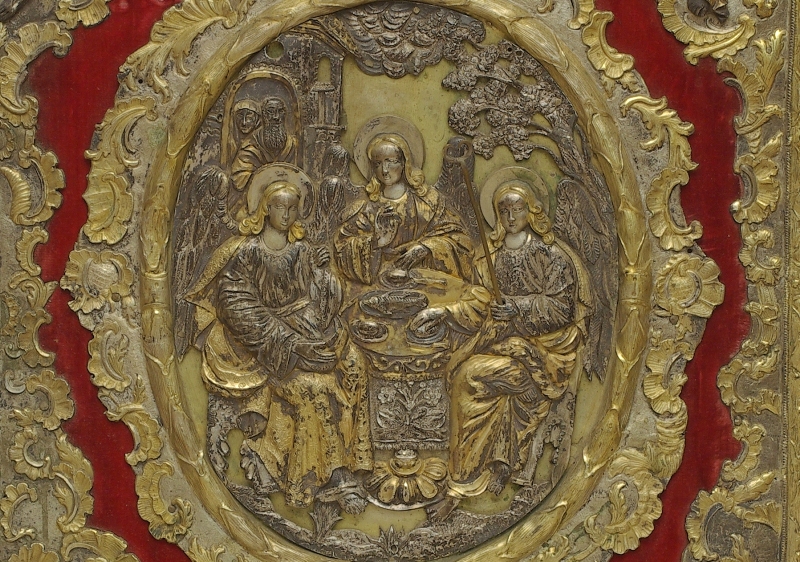


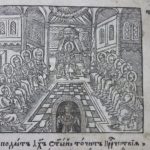
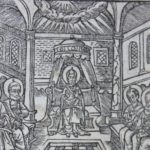



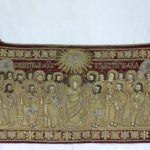



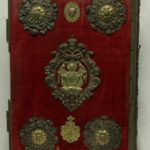
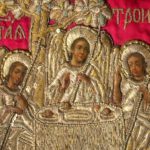
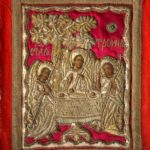

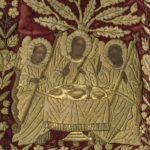
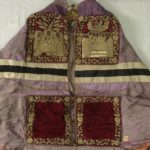
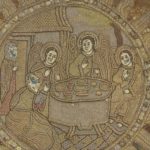


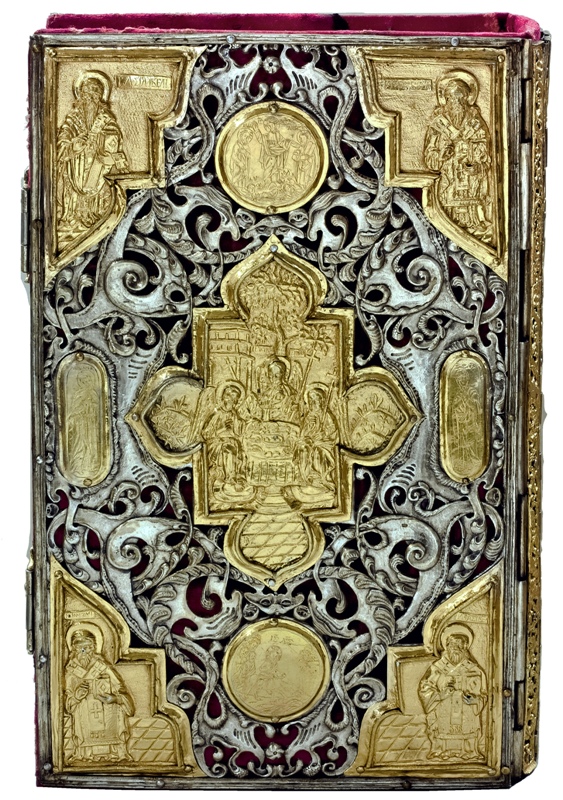
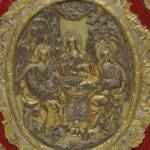
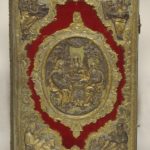

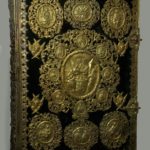
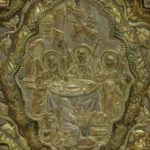
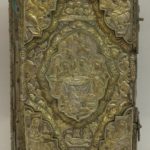
More Stories
Exhibition “Witnesses last. Memorial furniture of the 16th century, XVIII, ХІХ ст.”
Congratulations to dear Vera Zaychenko!
Anthem of Ukraine and Verbytskyi